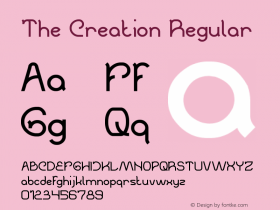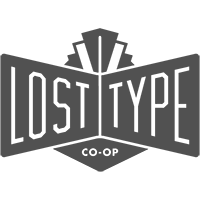Typecast: How New Technology Is Reinventing Typography
Highsmith is a master designer, but has also teaches the art of awesome letter design at RISD and through his book
Some enterprising typographers have turned to the crowd for cash — a typeface based on the handwriting of Sigmund Freud has raised over $20,000 with over a week to go. Image:
Designer Christian Helms is keeping busy crafting letterforms for craft brews. Image:
The Vista Sans Wood Project turned a ubiquitous system font from the Windows OS into an artistic expression. The digital typeface was translated into wood block library that could be used in vintage letterpresses. As if it didn't have enough hipster cred, the team behind it raised funds for the project on
A decade ago, a well-crafted font would have cost quite a bit of money, but thanks to innovative experiments like the Lost Type Co-op, great typefaces like
House Industries helped establish the trend that brought back retro scripts inspired by mid-century sign painters. They also have created a line of apps based on their typographic efforts. Image:
Hundreds of years after the creation of the type design profession, new designs continue to be created. The Hoefler & Frere-Jones foundry developed the font used by Barack Obama's campaign for president and is hard at work telling new stories. Image:
When type was made of metal, creating a new font was a serious investment. With digital tools, designers can push typefaces to the boundary of legibility with nothing more than an investment of time required. Image: Creative Market
Technology causes disruption and innovation for all facets of the world, a rule that is being shown in current times more so than almost any other. 3-D printers are challenging factories. Kickstarter is upending fundraising. And even the humble font is getting a technological makeover. New technology and standards continue to put a new face on type, and the use cases are extending off our computer screens and into the physical realm too.
Designing typefaces is a rare craft that involves drawing letterforms and painstakingly setting the spacing between them. For hundreds of years, designers had to master wood carving and metal casting to practice their art. With the rise of computers they learned to conquer bitmaps and vectors using tools like Glyphs, FontLab, or RoboFont. As programming becomes a common part of the designer's skill set, innovation is continuing along these lines.
"We've been designing typefaces for specific printing process since as long as type's been made," says Cyrus Highsmith. "To draw a new typeface for the screen or for a specific device is just an extension of what I've already been doing."
Highsmith creates typefaces for the type foundry The Font Bureau and teaches typography at RISD. His fonts are are sold directly to designers, commissioned by clients like Sports Illustrated and Martha Stewart Living, and he recently wrote a textbook called Inside Paragraphs: Typographic Fundamentals. He's part of a rich tradition that stretches back to Gutenberg, and feels equally excited about the future of his profession.
According to Highsmith, the last decade has been challenging for type designers. The print world is shrinking, but technical limitations prevented web designers from fully exercising their typographic skills. Now, however, the growing popularity of the "@font-face" tag that became formalized in the CSS3 specifications is reinvigorating typography on the web by allowing a diverse range of unique but high-quality fonts to be called onto a page from an external foundry. With it, web designers can think more like print specialists and purposefully choose typefaces rather than defaulting to system fonts. "Suddenly the number of people who are thinking about typography has exploded," he says.
Using these new web standards in the service of "responsive design" is an area of interest to Highsmith and his colleagues at The Font Bureau. "How do you design responsive typefaces that can change based on the device being used, whether they're being used as a headline or caption, or the size of the page they're on?" he asks. He points out that the nature of fonts is changing rapidly, and cites Chartwell, an interactive "font" developed by Travis Kochel, which designers can use to make quick charts, graphs, and spark lines by typing.
While Chartwell is technically impressive, Highsmith feels innovation is an integral part of type design. And alongside the tools, the business model of these type foundries has also morphed over the last decade. Big print publications used to commission new typeface for magazines, but as that industry is being disrupted the revenue stream associated with it has shrunk significantly. They also have to contend with a glut of high quality, free typefaces that can be had on sites like Dafont and the Lost Type Co-op, and even through Google's web fonts service.
Piracy is also a source of concern for type designers, although slightly less so for those who are focusing on web fonts than those stored locally on your hard drive. Names of typefaces can be trademarked and their digital source code can be protected by copyright, but the the characteristic designs of Helvetica, Mrs. Eaves, or Gotham have no inherent protection. According to Highsmith, the graphic design community is pretty well educated about properly licensing typefaces, though there is a segment of the community that pirates and collects fonts like Pokemon cards. Instead of spending time concocting a new DRM scheme to thwart thieves, Highsmith has a simpler solution and says "We'll just draw new fonts."
Despite the challenges, Highsmith is optimistic about the future of his field. New kinds of clients, like video game companies and smartphone manufacturers, have helped keep the lights on. Foundries have gotten better at selling directly to their users. Some have branched out into selling apps and home decor while others have turned to Kickstarter to fund new fonts, but the common theme is that type designers will find ways to adapt to new technologies and markets, just like writers have.
"Type is part of a story," says Highsmith. "The typefaces you choose can help tell that story."
-
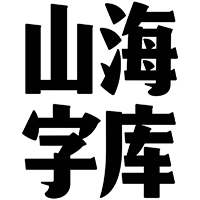 ShanhaiFonts
ShanhaiFonts
Brand:山海字库
Area:China

-
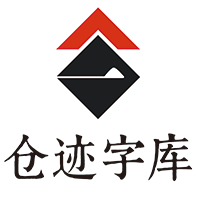 Cangji Fonts
Cangji Fonts
Brand: 仓迹字库
Area: China

-
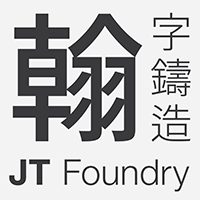 JT Foundry
JT Foundry
Brand: 翰字铸造
Area: Taiwan, China

-
 Handmadefont
Handmadefont
Brand:
Area: Estonia

-
·千图字体
-
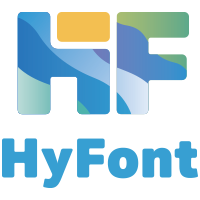 HyFont Studio
HyFont Studio
Brand: 新美字库
Area: China

- ·Königsblut identity
- ·How House Industries Designs Its Retrotastic Logos and Typefaces
- ·How to sell your typefaces
- ·Fonts Design of Childhood Memory
- ·The Future of Sex poster
- ·"Die Alpen – Vielfalt in Europa" stamp
- ·Once Upon DESIGN: New Routes for Arabian Heritage
- ·Surabaya Beat by Beat Presser, Afterhours Books
- ·Cocoa Marsh Instant Fudge Candy Mix packaging
- ·He Invented a Font to Help People With Dyslexia Read




